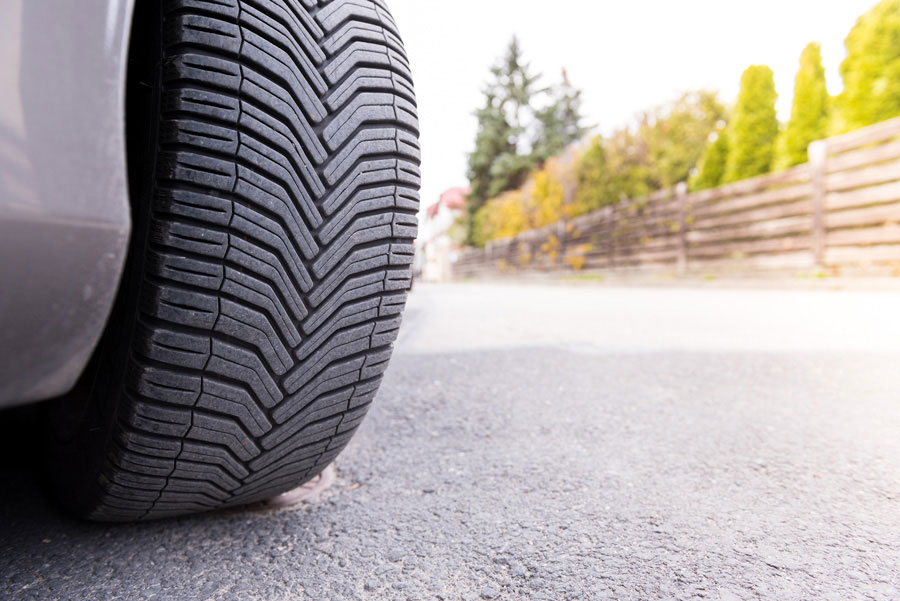All-season tyres, often also known as all-weather tyres, are becoming increasingly popular. This is the conclusion drawn by the portal reifen.com. But what exactly are the differences and which tyre version is better suited to what type of people? The main differences are in the tyre profile and in the type of rubber used. All-season tyres can be driven all year round, provided they bear the Alpine symbol (3PMSF). This is prescribed for all-season tyres from year of production 2018. Only tyres with this snowflake symbol are actually approved for use as winter tyres. There is a transition period for M+S tyres produced until the end of 2017. These can still be used as winter tyres until 30.09. of this year.
What are the characteristics of a summer tyre?
Summer tyres are made of a slightly harder rubber and usually have a rougher profile, which means that they grip better in the rain, displace the water better and thus protect against aquaplaning. They also cope well with high temperatures and the rubber compound used guarantees safe driving on hot roads even at temperatures around 40 degrees Celsius. The braking power is good in both wet and dry conditions. It is important to know that the rubber compound of summer tyres hardens at temperatures below 7 degrees Celsius and thus loses its performance characteristics, especially on wet road surfaces. So you should never drive with summer tyres in winter.
And what about winter tyres?
The profile of winter tyres usually has many small fins and a larger tread depth. These ensure better grip in winter road conditions such as ice and snow, resulting in shorter braking distances. The rubber compound used is specially designed for cold temperatures, as it remains elastic even in frost and can thus adapt better to the surface structure of the road. Winter tyres are marked with the Alpine symbol (3PMSF mark).
All-season tyres - a compromise?
All-season tyres have a mixture of longitudinal grooves and fins and the rubber compound is a little softer and therefore more similar to the rubber compound of winter tyres. As a result, they combine the properties of summer and winter tyres. However, all-season tyres cannot match real winter tyres in extreme weather conditions. As with winter and summer tyres, a minimum tread depth of 1.6 millimetres is also required for all-season tyres, a minimum profile depth of 3 to 4 millimetres is recommended. It should also be noted that all-season tyres wear much faster, as they are driven all year round.
Conclusion
There is no clear recommendation. Ultimately, every driver has to decide which tyres are best suited for their requirements. For anyone who drives frequently in winter weather, perhaps even lives in the mountains and/or regularly go skiing, traditional winter tyres are the best option. All-season tyres can be a good compromise for anyone who prefers to leave the car at home in winter weather or only drives in the city and milder regions. After all, they combine the strengths of winter and summer tyres. Another advantage is that there is no need for the annoying tyre change and no storage space is required for the tyres that are currently not required. This saves time and money.

